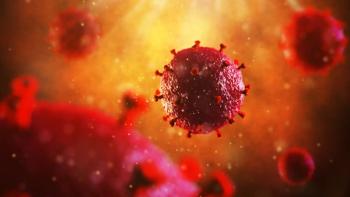
Nevirapine-based HAART Regimens: What Effect on HIV-Associated Lipodystrophy?
Long-term highly-active antiretroviral therapy can be associated with disturbing morphologic and metabolic changes. Nevaripine is added to three HAART regimens in this study to evaluate any mitigating effects.
Components of lipodystrophy have emerged as key tolerability issues among HIV-infected patients receiving long-term highly active antiretroviral therapy (HAART) and include changes in lipid distribution (ie, lipoatrophy, central fat accumulation) as well as metabolic changes (ie, dyslipidemia, changes in glucose metabolism).1 Protease inhibitors have been particularly associated with these complications, followed by nucleoside reverse transcriptase inhibitors and non-nucleoside reverse transcriptase inhibitors, in that order.2 Previous reports have associated switching from such nucleoside backbone agents to nevirapine with improved metabolic outcomes including partial reversion.3
A notable cross-sectional observational study examined the effects of three different fixed-dose combination HAART regimens plus stable nevirapine therapy on both the metabolic and morphologic changes associated with lipodystrophy in HIV-infected patients.2 The investigators followed a cohort of patients with documented HIV infection who received HAART for at least two years and who had been diagnosed with lipodystrophy at the University of Modena and Reggio Emilia, Modena, Italy. Multivariate regression analyses were used to evaluate predictors of four components of lipdodystrophy: lipoatrophy using leg fat mass measured by dual-emission x-ray absorptiometry (DXA); fat accumulation using waist circumference; dyslipidemia using apolipoprotein (Apo)B/ApoA1 ratio, and glucose intolerance using HOMA-IR.2 The study enrolled 101 patients. The investigators found that:
-- Male sex was associated with reduced leg fat mass (p<.05).
-- Age and body mass index (BMI) were associated with increased leg fat mass (p<.05)
-- Leg fat mass and male sex were associated with increased waist circumference (both p<.001)
-- Leg fat mass predicted reduced (Apo)B/ApoA1 ratio (p<.05)
-- Age and BMI predicted increased (Apo)B/ApoA1 ratio (p<.05)
-- BMI predicted HOMA-IR increase (p=.002)
In contrast with other studies of the impact of nevirapine, there were no differences found in lipoatrophy, central fat accumulation, dyslipidemia, or glucose metabolism among the three nevirapine plus nucleoside backbone regimens.2
This study showed that HAART regimens that include nevirapine have little effect on lipodystrophy in HIV-infected patients.2 Primary care physicians treating HIV-infected patient should be aware of the patterns of lipodystrophy in this group of patients.
References:
- Martinez E, Mocroft A, GarcÃa-Viejo MA, et al. Risk of lipodystrophy in HIV-1-infected patients treated with protease inhibitors: a prospective cohort study. Lancet. 2001;357:592–598.
- Guaraldi G, Zona S, Orlando G, et al. Morphological and metabolic components of lipodystrophy in various nevirapine-based highly active antiretroviral therapy (HAART) regimens: a cross-sectional, observational study. Clin Drug Investig. 2011;31:759-767. doi: 10.2165/11593920-000000000-00000.
- Martinez E, Lazano L, Conget I, Casamitjana R, Gatell J. Reversion of metabolic abnormalities after switching HIV-1 protease inhibitors to nevirapine.
AIDS. 1999;13:805-810.
Newsletter
Enhance your clinical practice with the Patient Care newsletter, offering the latest evidence-based guidelines, diagnostic insights, and treatment strategies for primary care physicians.



















































































































































































































































































